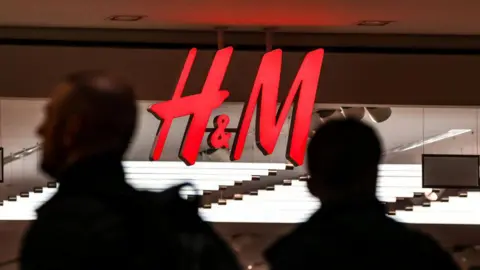In a transformative development within the fashion industry, the renowned retailer H&M has announced its plan to utilize artificial intelligence (AI) to create digital “twins” of a select group of 30 models. This innovative approach aims to generate virtual representations of human models for use in various marketing efforts and social media postings. However, the company has carefully noted that these AI-generated replicas would only be deployed with the consent of the respective models. H&M’s ambition is to explore a new frontier in creative expression while harnessing technology to enhance the visual representation of its fashion items, as articulated by Jörgen Andersson, H&M’s chief creative officer.
While H&M maintains that it intends to uphold its “human-centric approach,” there exists a palpable concern among industry professionals regarding the potential ramifications this strategy could have on employment. Many stakeholders, including models, photographers, and makeup artists, worry that the integration of AI into advertising could diminish career opportunities in these fields due to the cost-effectiveness of using digital images over traditional live photoshoots.
Prominent social media influencer Morgan Riddle openly criticized H&M’s venture, describing it as “shameful” in a recent Instagram story. Riddle articulated her grave concerns regarding the adverse effects this initiative could usher in, particularly its potential to render other roles in the production ecosystem obsolete. “RIP to all the other jobs on shoot sets that this will take away,” she indicated, highlighting the widespread anxiety surrounding automation in creative jobs.
The early reports of H&M’s undertaking were brought to light by the industry publication Business of Fashion. According to statements from the company, the models would maintain autonomy over the use of their digital replicas, including safeguarding rights regarding how they are employed by H&M and other brands for promotional activities. Notably, the images resulting from this AI collaboration will primarily feature in social media content, adorned with watermarks that clarify the artificial intelligence aspect to audiences at a glance.
In compliance with the evolving digital landscape, platforms such as Instagram and TikTok mandate that users disclose when utilizing AI-generated content. This applies to H&M’s initiative, ensuring transparency with consumers regarding the digital nature of the representations they encounter. Additionally, the company committed to compensating participating models for the use of their digital likenesses in a manner akin to existing agreements—meaning remuneration would be determined by terms set by their respective agents.
The trend towards generative AI in fashion is not isolated to H&M; other industry players like Hugo Boss and Levi Strauss & Co. have also ventured into using AI technologies to create product visuals. Levi’s, for instance, declared its plans to trial AI-generated model visuals as a strategy to enhance diversity within its campaigns, although the brand emphasized that it would not abandon traditional photoshoots involving live models.
Generative AI technology has garnered attention for its ability to rapidly produce life-like images based on simple prompts, enabling brands to meet the demands of streamlined content creation. However, this has simultaneously sparked controversy, especially among creatives worried about the possible reductions in demand for human talent in production roles. The concern is that this development could lead to fewer opportunities for photographers, makeup artists, stylists, and other critical contributors to visual storytelling in fashion.
To develop these AI likenesses, H&M is collaborating with the Swedish tech firm Uncut. Uncut claims to provide services that help major brands modernize content creation processes by making them more efficient and cost-effective. Interestingly, for specific models, the creation of an AI twin might offer advantages such as decreased travel necessity and the ability to take on more projects. Model Mathilda Gvarliani described her AI duplicate as “like me, without the jet-lag,” suggesting that digital avatars could offer a practical solution to the demands of the modeling profession.
Overall, H&M’s foray into using digital models demonstrates a significant pivot in the fashion sector, merging technology with traditional marketing. The response has been mixed, reflecting a broader dialogue about the role and future of human creativity in an increasingly automated world. The balance between innovation and safeguarding jobs will remain a crucial topic as companies navigate these changes in the fabric of fashion marketing.










